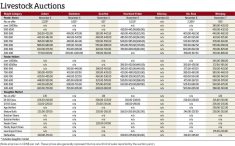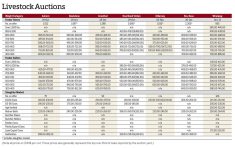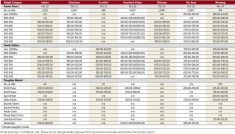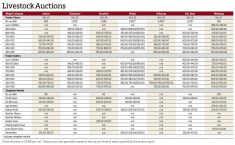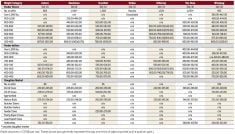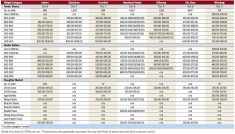For the first time this year, all eight Manitoba cattle auction sites held regular sales during the week ended Jan. 27. But while prices have been pulled in both directions, the start of the calendar year has been slow in terms of the amount of cattle going through the rings.
“The one thing we’ve seen this past week is, with the weather conditions, we haven’t seen big runs of cattle at any of the markets. There’s been nothing that has been exceptionally big in Manitoba. The supply-and-demand ratio has helped keep the market fairly steady,” JGL cattle buyer Rick Wright said, alluding to another blast of cold and snowy weather hitting southern Manitoba. “If the weather gets straightened out for next week, we could see bigger volumes.”
Read Also
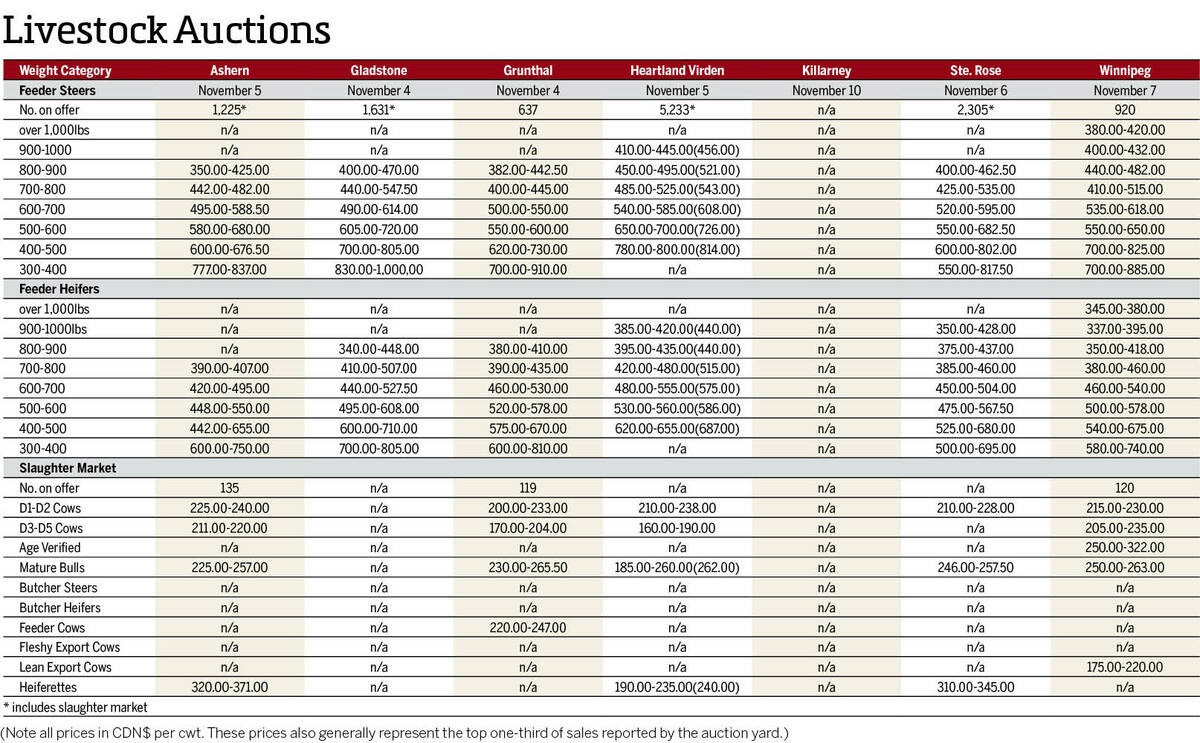
Manitoba cattle prices – Nov. 10
Cattle prices from Manitoba’s major auction marts for the week of Nov. 4-10.
A total of 7,989 cattle were sold at eight sales, an increase of 6,621 from the previous week. Ashern’s first sale of 2022 on Jan. 26 saw 1,478 head sold, more than making up the difference.
Rising feed prices and backlogs at meat packers have affected cattle prices, according to Wright, as well as a weakening Canadian dollar. Anticipated drops in the prices of barley and wheat during the winter have not occurred and the costs of transportation for other types of feed are rising, leading producers to hang on to whatever feed they have.
Those with heifer calves weighing less than 700 lbs. are keeping them with the intent to put them to pasture in the summer despite recent U.S. interest, Wright added. Meanwhile, price pressures have been seen on cattle weighing more than 850 lbs.
“The fundamentals of what drives the market haven’t changed,” he said.
The February live cattle contract on the Chicago Mercantile Exchange (CME) closed at US$137.825 per hundredweight on Jan. 27, little change from the previous week despite a US$1.50 drop after the weekend. On the same day, the March feeder cattle contract closed at US$159.50/cwt, the lowest close since last November. The Canadian dollar closed at 78.67 U.S. cents on Jan. 27, a 1.5 cent drop from one week earlier.
Wright added that cattle from Manitoba are going west, east and south. Ontario has shown interest in exotic cross-cattle while Alberta is still a strong buyer. Americans are buying certain types of cattle depending on the futures.
“Everybody’s getting a piece of the cow. Probably half of the cattle sold are going to Eastern Canada and the rest are split between (Western Canada and the U.S.),” he said.
After Wright had predicted more than 2,000 cattle sold at Ashern’s first sale, he now anticipates a shorter spring run this year due to lower numbers. He also expects lighter cattle to maintain their prices over the next few weeks.
“If you look far out into the future, the grass market looks like it should be pretty good. We’ve got snow on the ground, so it’ll put some water back into the dugouts and the streams,” Wright added.
“Cattle guys are gamblers. They’re betting they’re going to have a crop. They’re betting they’re going to have lots of grass and they want to have some inventory on hand and we know we’re not going to have the numbers. So that’s keeping the market going.”
Manitoba Beef Producers’ 43rd annual general meeting will take place via Zoom on Feb. 10. Registration is free and can be done online at mbbeef.ca/our-news/43rd-annual-general-meeting/.




